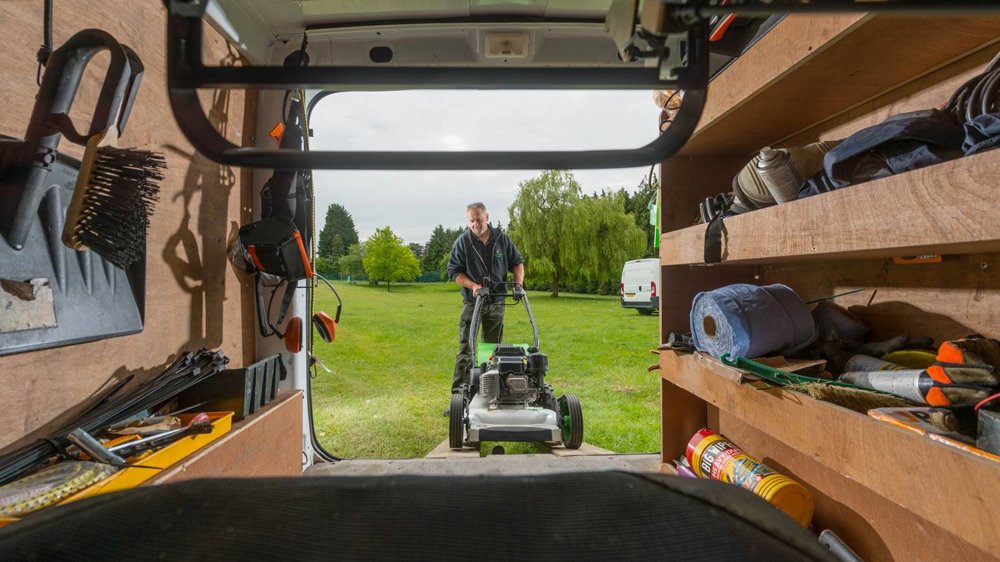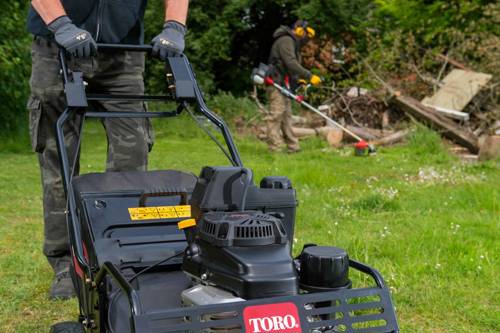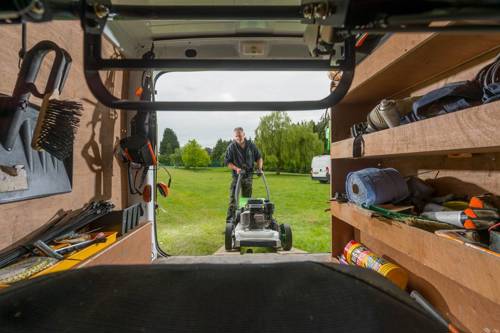How to price landscaping jobs
10 ago. 2022 Small Business Advice
If you’re starting a brand new business and wondering where to begin with pricing, or just need a quick refresh of the basics, we have created a simple overview to help get your business on the right track.
Pricing a landscaping job can feel like a delicate balancing act. You want to have an attractive price that will appeal to customers and stay competitive with other landscapers, but it needs to be profitable. Determining the right price for each individual landscaping job is instrumental in running a successful business: underestimate the cost of a job, and you can quickly find yourself losing any profits, or even end up out of pocket. Once a price has been agreed upon, it is near impossible to backtrack on it – particularly if you want to avoid losing any future business with that customer.
Here we look at some of the easiest, most effective ways to establish the price of a landscaping job, and help you avoid any of the common pitfalls of pricing.

Cover every detail with your client and visit the site to determine the full scope of the job
This may seem an obvious step, but it can make or break your business. If this stage is done half-heartedly, or not given the consideration it needs, you will not be able to effectively determine the price of a job, which will inevitably lead to issues down the line.
Right from the start, you’ll need to have an in-depth and honest discussion with the client: you need to clearly establish their expectations, including time frame and budget. This first meeting also gives you the chance to show your expertise, and offer additional services if given the opportunity. You need to have a clear understanding of your client’s needs, and offer them potential solutions – but the budget and time constraints must be something you can realistically fulfil. Remember, if there is a tight time frame but you can still complete the job, don’t be afraid to charge extra for the service.
To get an idea of suitability, and rule out any work you’re certain you can’t do, your first discussion with a potential client can be a simple phone call. But don’t be tempted to quote costs until you’ve completed a site visit. Visiting the location of the job in-person will allow you to see a number of factors that you just can’t find out over the phone.
Things you should consider when visiting the site:
- The dimensions of the site – the first thing you should establish is the measurements of a site, which you will need when ordering materials.
- Ease of access – if it’s a remote location, you will spend more on fuel to reach it. If in a busy, congested area, access might be tricky.
- Are there any difficult features, special requests or complex services required?
- Are there any potential safety issues or existing property damage to note?
- The current condition of the site – are there any obstacles or previous works that need to be removed or altered?
- What is the quality of the soil? You might need additional equipment or materials.
- In which season will the work be completed? Outdoor work like landscaping is dictated by the weather – and the season. Whether it’s keeping up with spring and summer growth, or the difficulties of working in winter; it could be a more time consuming job.
The first stage is the most important stage in pricing a landscape job. Remember to be as thorough as possible when asking the customer questions and assessing the scope of the job – you’ll thank yourself later when it comes to establishing a fair price.
What are your labour costs?

After determining the scope of the job, it’s time to break it down into the hours you’ll need to complete it.
This part of pricing becomes easier with experience. The simplest way to calculate the total number of hours is to look at previous, similar jobs you have completed. It may be a bit of educated guesswork to begin with – unless you have a fellow trusted landscaper you can ask for advice – but you will eventually know how many hours a job will roughly take without needing to check.
If you have a team working for you, you can just split the total hours, and the rate you have set for them, between you. If you’re the only person working on the project, you can simply multiply the project hours by your own hourly rate.
Calculate the material costs
Those measurements and lengthy discussions with the client you had in the initial stage will pay dividends now.
Ordering too little can put an entire job on hold, while ordering too much will put you out of pocket if it can’t be used for other work. Taking accurate measurements allows you to order the precise amount of materials needed, and calculate the exact material costs of the job.
All material costs should be totalled into one figure. To avoid any surprise costs or missing supplies, ensure that you include every single material involved in the project, from compost, turf and plants, to cement and gravel and more. Be mindful of other jobs you are working on or have in the pipeline, as bulk material orders will reduce your cost of sale and extend your margin, or even allow you to offer a lower, more attractive price to new clients needing those same materials.
An aspect of material costs that is easy to forget is the impact on your tools and machinery; a small fee to cover wear and tear should be included, which can be listed as operational costs under overheads.
Determine your overhead fees
Often overlooked but vitally important, the overhead fees included in taking on a job can be the difference between a profit and a loss.
Your overhead costs include everything involved with the general running of your business, bar the actual work completed. This can include marketing costs, time spent accounting – or the cost of an accountant – internet bills, workshop/office rent, insurance or legal fees. Essentially, the overhead fees include any costs that aren’t directly related to working a job.
It’s important to factor these overhead costs into the price of a job, as they can quickly drain your profits when ignored. When you have calculated the business overheads, you could consider adding that to your labour rate, so it’s always covered.
Calculate the total cost and add markup percentage for profits

Once you have established the cost of materials, labour and overhead fees, you reach the final stage – you can calculate the total cost of the job.
Where pricing really varies between landscaping businesses is the markup percentage for profits. This is entirely down to your own discretion, but it needs to be competitive. You don’t want it to mark you out of contention with potential customers! If calculated correctly, your estimate should already be profitable for your business.
The location of your business and the type of job (eg. residential or commercial) has a big impact on your markup percentage, but the general rule of thumb is that the markup should be somewhere between 10% and 20%. Looking at the prices your local competitors are charging can be a good way to get an idea of competitive pricing in your area - it’s especially easy to do if you offer a price match service.
Should you charge by-the-hour or by project?
When it comes to charging for a project, you will need to choose between these two methods.
Charging by the hour ensures you get paid for the entire length of time you are working, so naturally, it would seem the obvious choice. Unfortunately, it is often the method that causes the most issues with clients. If a project runs on longer than they expected, or they believe you are not working hard enough within a certain time frame, they may question the number of hours you’re taking.
Charging by project is usually the better option, as long as you calculate the costs of materials, labour time and overhead fees correctly. This way, if you finish a job earlier than expected, you will not lose any profits; in fact, it’s an incentive to work quicker and more efficiently. When you are paid by the hour, you are effectively ‘punished’ for finishing your work quickly, and could potentially lose some of the materials and overhead costs for finishing a job early.
For your next estimate, work out what’s best for you – and your client. Your business has to be profitable of course, but you need to balance it with the needs of your clients if you want repeat business. You want them to feel that they have received great value for the work completed, and this is done by offering a high-quality service at a price that works for them, and for you.
Pricing landscaping jobs - a final word
Pricing jobs is tricky, but keeping these basics in mind will help you get your business up and running – or back on track – with the right mindset. As you gain more experience and learn what works for your business, and in your local area, pricing a job will soon become second nature.
You may be interested in
-
Como atrair funcionários num período de escassez de mão de obra na indústria do paisagismo

-
How to avoid business owner burnout

-
Social media post ideas for your landscaping business

-
Como tirar fotografias e gravar vídeos extraordinários dos seus trabalhos para o seu negócio de paisagismo

-
Viver a vida de um paisagista — considerações a nível físico e mental

-
Ferramentas essenciais para negócios de paisagismo







